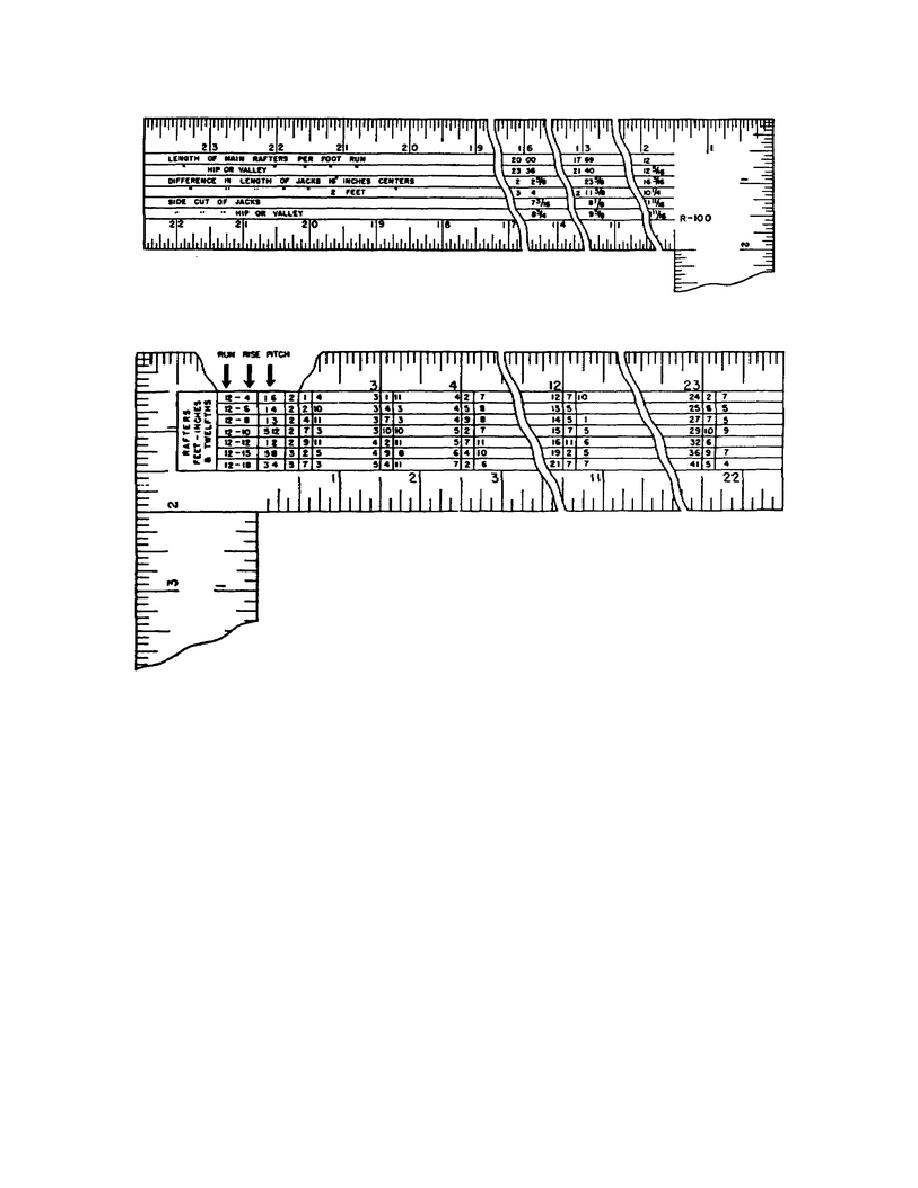
Figure 2-16. Rafter table, blade face.
Figure 2-17. Rafter table, back of blade.
known. Suppose the building is 20 feet, 8 inches
(fig. 2-17). This shows the run, rise, and pitch of
wide and the rise of the rafters is to be 13 inches per
rafters of the seven most common pitches of roof
foot of run. The total run of the rafters will be 10
(fig. 2-17). The figures are based on the length of the
feet, 4 inches. Look in the fist line of figures; under
horizontal measurement of the building from the
the 13-inch mark appears the number 17.69, which is
center to the outside. The rafter table and the outside
the length in inches of a rafter with a run of 1 foot
edge of the back of the square, both the body and
and a rise of 13 inches. To find the line length of a
tongue, are in twelfths. The inch marks may
rafter with a total run of 10 feet, 4 inches, multiply
represent inches or feet, and the twelfth marks may
17.69 inches by 10% and divide by 12 to get the
represent twelfths of an inch or twelfths of a foot.
answer in feet. The 17.69 inches times 10% equals
The rafter table is used in connection with the marks
182.79 inches, which, when divided by 12 equals 15
and figures on the outside edge of the square. At the
3/12 feet. Therefore 15 feet 3 inches is the line
left end of the table are figures representing the run,
length of the rafter. The remaining procedure for
the rise, and the pitch. In the fist column, the figures
laying out the rafters after the length has been
are all 12. These may be used as 12 inches or 12 feet
determined is described in a above.
as they represent the run of 12. The second column
of figures represent various rises. The third column
(3) The second type of rafter table
of figures, in fractions, represents the various pitches.
appears on the back of the blades of some squares
2-12



 Previous Page
Previous Page
